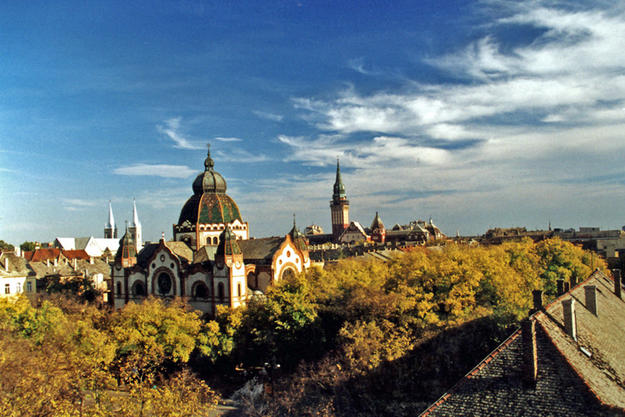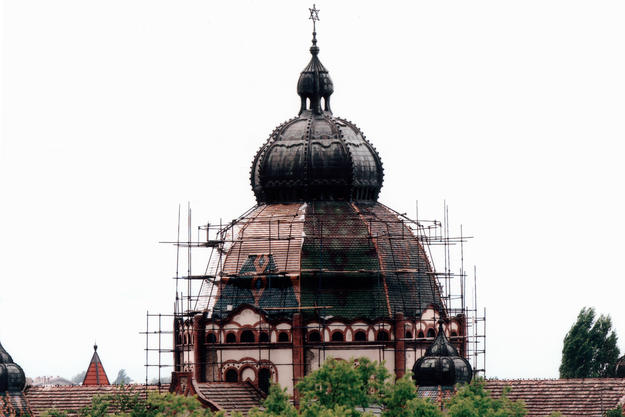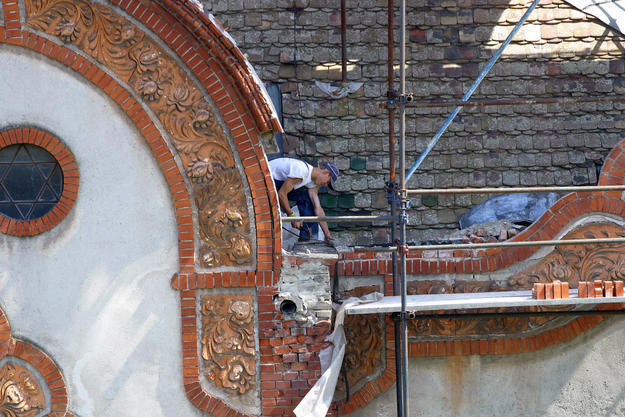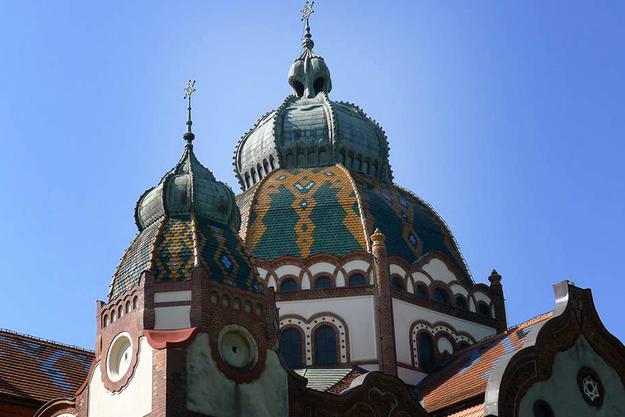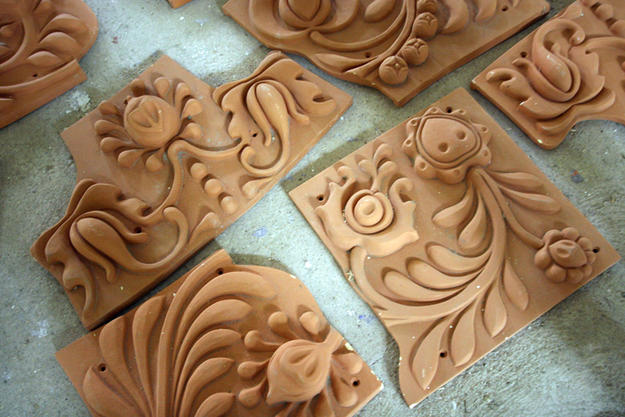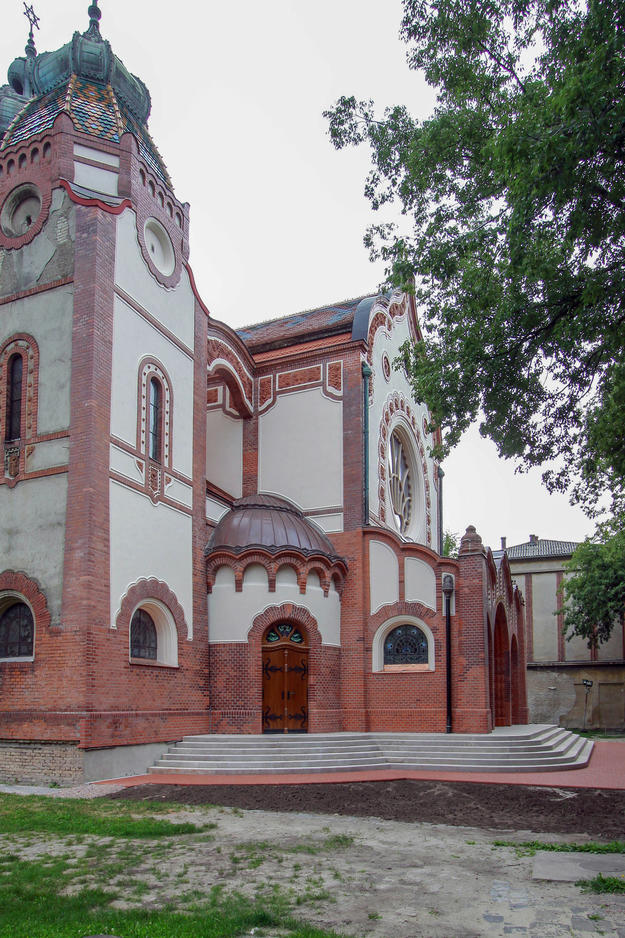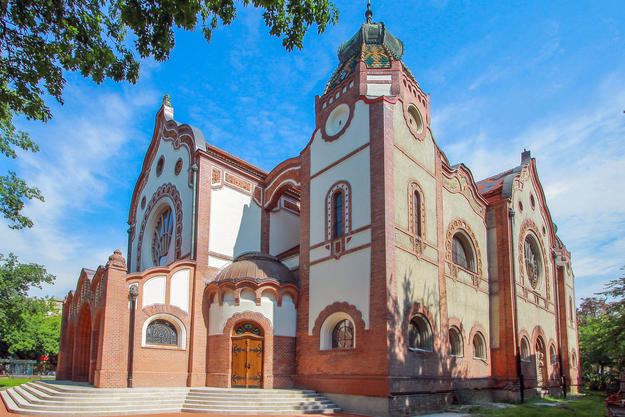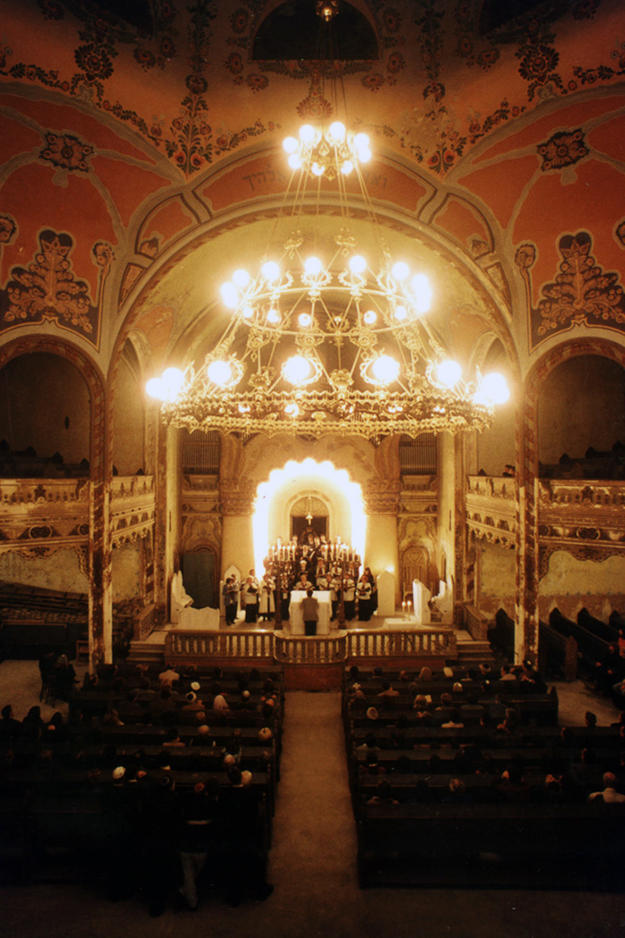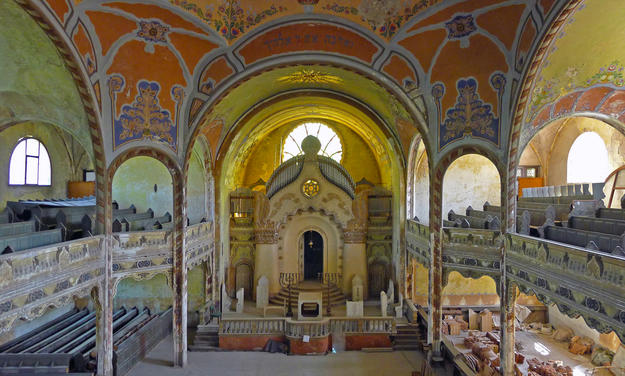Designed in the late 1890s and built in 1902, Subotica Synagogue is among the most impressive examples of art nouveau religious architecture in the region. The synagogue design was originally submitted as a competition proposal by Marcel Komor and Dezso Jakab to be built in Szeged, Hungary. After the design placed second, it was adapted and built in nearby Subotica. Eight steel columns support the synagogue’s central dome, the building’s dominant architectural feature.
The interior dome is constructed of light concrete and built in an unusual and technologically sophisticated shell-construction technique. The building’s roof is covered with elaborate Zsolnay-glazed roof tiles. Largely as a result of economic hardship and conflict in the region, the building suffered damage and neglect for many years, though restoration efforts began in the 1980s.
1996, 2000, 2002 and 2006 World Monuments Watch
Subotica Synagogue’s interior is as impressive as its exterior, featuring fine art nouveau paintings, carved and molded finishes, and Zsolnay ceramic work. To highlight the plight of the building, the synagogue was included on the Watch four times since 1996. For over fifteen years, World Monuments Fund has been committed to the conservation of Subotica Synagogue. A series of conservation and restoration campaigns have supported works to address drainage and water filtration problems on the roof and restoration of the cupolas and one of the facades.
In 2001, work focused on repairing the synagogue’s roof, broken windows, and decayed wooden roof support, in order to protect the building’s significant artistic and architectural treasures. Repairs to the synagogue’s four lower cupolas were completed in 2005, along with the renovation of the central dome and roof gables. In November, 2010, all restoration work of the roof surfaces, its water drainage system, central dome, and cupolas was successfully completed, finally rendering the roof water-proof after years of chronic leakage. In the fall of 2012, work began on Subotica Synagogue’s southwest façade, including restoration of the main tripartite entrance, conservation and replacement of brick, repointing, and documentation of a small arched Tiffany window.
WMF’s long-term commitment to Subotica Synagogue’s conservation and reuse has benefited the site greatly. Subotica is now part of a cross-border tourism initiative with Szeged, Hungary that highlights the two cities’ secessionist architecture and the surrounding wine region. The synagogue is open to the public for the first time in decades, and both the European Union and the Serbian Ministry of Culture provided significant grants to the conservation of the synagogue’s exterior. Between 2015 and 2017, support from the Hungarian government enabled the restoration of the remaining façade and other exterior work, treatment of the landscape, fence and lighting, as well as the complete restoration of the synagogue’s interior. The now restored synagogue reopened to the public in early 2018.
Built of steel and concrete, and decorated with fine ceramics, paintings, and carving, Subotica Synagogue is an example of a combination of traditional crafts and innovative building technology. The synagogue is among the area’s best examples of Art Nouveau architecture, and one of the most important works of sacred architecture in that style.
It is a significant monument in the region, and a visible reminder of the long and prominent history of Jewish culture in the area. WMF’s longtime work at Subotica recognizes the synagogue as an architectural treasure and a notable site of cultural significance.

